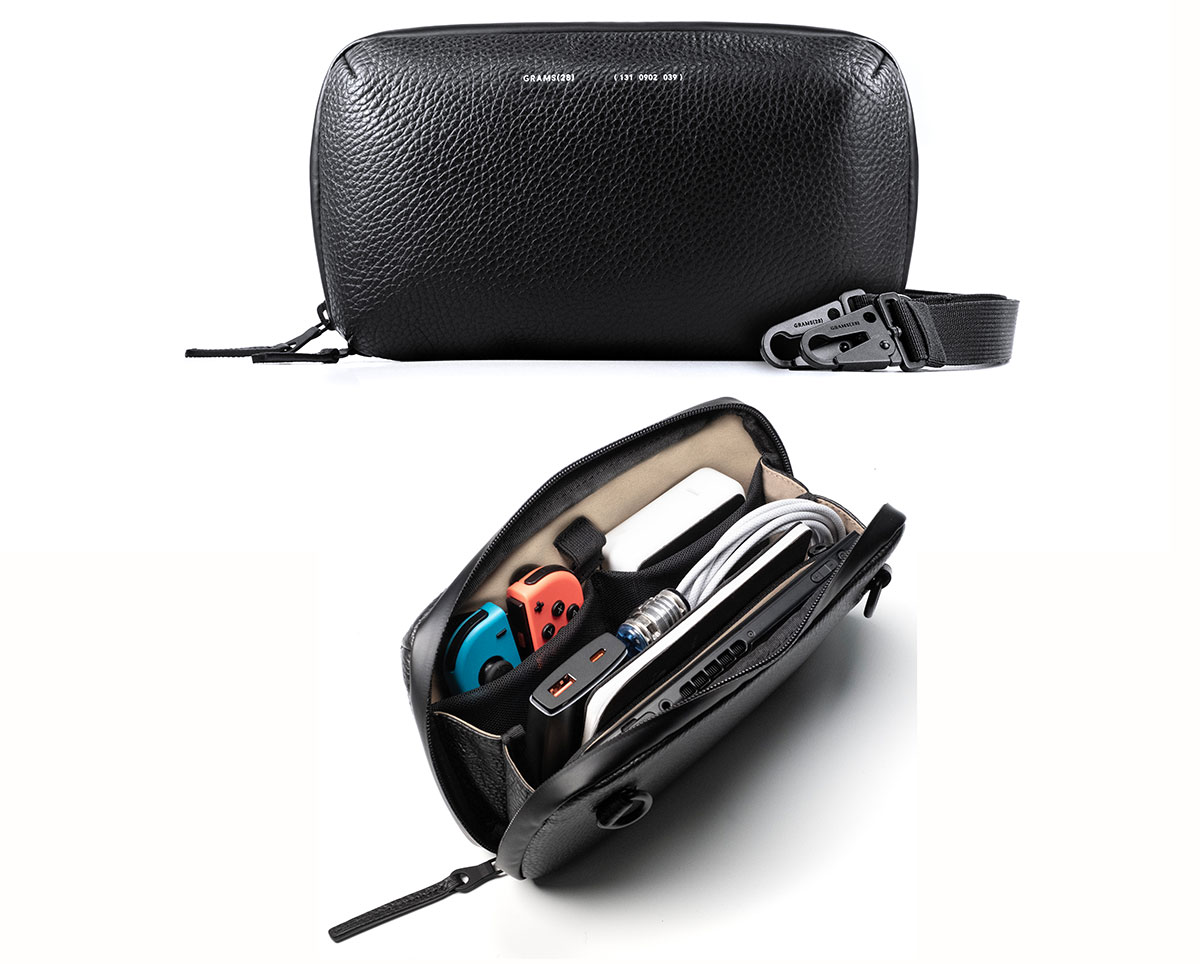Discover Pandipedia
Pandipedia is the world's first encyclopaedia of machine generated content approved by humans. You can contribute by simply searching and clicking/tapping on "Add To Pandipedia" in the answer you like. Learn More
Expand the world's knowledge as you search and help others. Go you!
In recent years, the advent of text-to-image diffusion models has revolutionized how we generate images. These models allow users to input a descriptive text, which the model then transforms into a visual representation. However, enhancing control over the image generation process has become an essential focus in the field. This blog post discusses a novel approach named ControlNet, which adds conditional controls to text-to-image diffusion models, enabling more precise and context-aware image generation.
Understanding Text-to-Image Diffusion Models
Text-to-image diffusion models like Stable Diffusion work by gradually adding noise to an image and then reversing this process to generate new images from textual descriptions. These models are trained on vast datasets that help them learn to denoise images iteratively. The goal is to produce images that accurately reflect the input text. As stated in the paper, 'Image diffusion models learn to progressively denoise images and generate samples from the training domain'[1].
Despite their impressive capabilities, these models can struggle with specific instructions. For instance, when users require detailed shapes or context, the model may produce generic outputs. This limitation led to the development of Conditional Control, where the model learns to incorporate additional information, such as edges or poses, into its generation process. ControlNet was designed to leverage various conditions to enhance the specificity and relevance of the generated images.
Introducing ControlNet
ControlNet is a neural network architecture that integrates spatial conditioning controls into large pre-trained text-to-image diffusion models. The primary objective of ControlNet is to allow users to add dimensions of control that were not previously possible. The approach involves using a technique called 'learned conditions,' which allows the model to accept additional inputs, like edge maps or human poses, to influence the resulting image.
The authors describe ControlNet as follows: 'ControlNet allows users to add conditions like Canny edges (top), human pose (bottom), etc., to control the image generation of large pre-trained diffusion models'[1]. This means that rather than solely relying on textual prompts, users can provide additional contextual cues that guide the generation process more effectively.
Applications of ControlNet

ControlNet has shown promising results in various applications. It can create images based on input conditions without requiring an accompanying text prompt. For example, a sketch input or a depth map could be used as the sole input, and ControlNet would generate a corresponding image that accurately reflects the details in those inputs.
The paper details numerous experiments demonstrating how ControlNet improves the fidelity of generated images by integrating these additional conditions. For instance, when testing with edge maps, the model could produce images that adhere closely to the specified shapes and orientations dictated by the input, leading to “high-quality, detailed, and professional images”[1].
Methodology Behind ControlNet
The architecture of ControlNet involves adding layers that handle different kinds of inputs. It connects to pre-trained diffusion models while introducing zero-convolution layers, which help prevent the detrimental effects of noise during training. The flexibility of ControlNet allows it to adapt to various types of prompts seamlessly.
By leveraging a foundation of large pre-trained models, ControlNet also benefits from their robust performance while fine-tuning them specifically for new tasks. The authors highlight that “extensive experiments verify that ControlNet facilitates wider applications to control image diffusion models”[1]. This adaptability is crucial for tackling diverse use cases and ensuring that the model can respond accurately to its inputs.
Training and Performance

To train ControlNet, researchers employed a method that involves optimizing for a range of conditions simultaneously. This multifaceted training process equips the model to recognize and interpret various inputs consistently. The results showed significant improvements, particularly noted through user studies where participants ranked the quality and fidelity of generated images. ControlNet was often rated higher than models that only depended on text prompts, proving the effectiveness of incorporating additional controls[1].
Another compelling aspect discussed in the paper is the impact of training datasets on performance. The researchers illustrated that the model's training does not collapse when it is limited to fewer images, indicating its robustness in learning from varying quantities of data. Users were able to achieve desirable results even when the training set was significantly restricted[1].
Conclusion: The Future of Image Generation
In summary, ControlNet represents a significant advancement in the capabilities of text-to-image generation technologies. By integrating conditional controls, it offers users greater specificity and reliability in image creation. This added flexibility makes it particularly beneficial for artists and designers seeking to generate highly customized images based on various inputs.
As these models continue to evolve, the seamless integration of more complex conditions will likely lead to even more sophisticated image synthesis technologies. With ongoing enhancements and refinements, ControlNet positions itself as a powerful tool in the intersection of artificial intelligence and creative expression, paving the way for innovative applications across multiple domains.
Let's look at alternatives:
- Modify the query.
- Start a new thread.
- Remove sources (if manually added).
- Request a manual search from our human research team.

The shift toward remote work has drastically transformed work-life dynamics, with significant implications for employees' lifestyles. This change, accelerated by the COVID-19 pandemic, has led to an increased focus on work flexibility and employee well-being.
Improved Work-Life Balance

One of the most notable benefits of remote work is the enhancement of work-life balance. According to a report, '71% of remote workers said remote work helps balance their work and personal life,' highlighting the positive impact that this arrangement can have on daily routines and overall satisfaction[2]. Remote work allows individuals to adapt their schedules to better accommodate personal responsibilities, leading to happier and more motivated employees. This flexibility is especially beneficial for those with family obligations, as it reduces the stress of commuting and allows more time at home[1].
Increased Productivity

Remote work has been shown to increase productivity, as employees can work in environments that suit their individual preferences. A study conducted by Stanford found that remote workers completed 13.5% more calls than their in-office counterparts, demonstrating that the ability to choose one's work environment can lead to better focus and output[1]. Furthermore, the flexibility in work hours means that employees can work during their peak performance times, optimizing their productivity levels.
Cost and Time Savings
Working from home also presents significant cost savings for employees. They can avoid expenses related to commuting, such as gas, public transport fares, parking fees, and even daily meals that would otherwise be purchased during work hours[1]. The elimination of commuting not only reduces financial burdens but also provides valuable time, allowing employees to engage in personal activities that enhance their quality of life.
Access to Broader Opportunities

Remote work expands job opportunities across geographical constraints. Companies now have access to a wider talent pool, enabling them to hire the best candidates regardless of their location[1]. This also allows employees to pursue roles that may not have been available in their geographic area, resulting in greater career mobility and potential[2]. The adaptability of remote roles has led to an increase in diversity within the workforce, allowing for a more inclusive work environment that benefits from a variety of perspectives and experiences[4].
Flexibility of Hours
The most appreciated aspect of remote work is its inherent flexibility. Employees consistently express the desire for flexible work hours, as this allows them to manage personal commitments more effectively[2]. For many, this flexibility translates into improved mental health and lower levels of stress, making remote work an attractive option.
Challenges and the Need for Balance
Despite the numerous benefits, remote work is not without its challenges. Concerns about decreased collaboration and engagement arise, as remote workers may feel isolated from their peers[2][3]. The lack of face-to-face interaction can hinder efforts to connect with colleagues and maintain a cohesive team culture[2]. In managing these challenges, companies must prioritize the use of effective communication tools and strategies to foster team connectivity. Surveys show that '53% of remote workers say it’s harder to feel connected to their coworkers,' indicating a need for intentional efforts to build relationships, even digitally[2].
Additionally, remote work can blur the lines between personal and professional life, leading to overworking or burnout. A significant number of remote workers, approximately 69%, report feeling increased burnout due to continuous digital communication and lack of boundaries[2]. Employers should consider implementing measures to help employees set clear work boundaries and manage their workload effectively.
Future Trends in Remote Work
Looking ahead, remote work is expected to remain a significant component of the workforce landscape. By 2025, an estimated 32.6 million Americans are projected to be working remotely, making up about 22% of the American workforce[2]. This trend indicates not merely a temporary swing toward remote work but a fundamental shift in how work is structured. Companies are recognizing the benefits of hybrid models, where employees spend part of their time working remotely and part in a traditional office setting. This approach combines the advantages of both arrangements, allowing for flexibility while still promoting collaboration and team cohesion.
The changes in flexible working conditions also suggest that organizations will need to adapt their policies to better accommodate remote and hybrid work environments[4]. The enactment of new regulations in some regions allows employees to request flexible working arrangements from the start of their employment, pointing to a future where flexible work is not just an option but an integral part of job offerings[4].
In conclusion, remote work has ushered in profound lifestyle changes for many individuals. While it provides numerous benefits, including improved work-life balance, increased productivity, and broader career opportunities, it also presents challenges that need to be carefully managed. As remote and hybrid work models continue to evolve, employees and employers alike must adapt to maximize the advantages of this new working environment.
Let's look at alternatives:
- Modify the query.
- Start a new thread.
- Remove sources (if manually added).
- Request a manual search from our human research team.
Get more accurate answers with Super Search, upload files, personalised discovery feed, save searches and contribute to the PandiPedia.
Let's look at alternatives:
- Modify the query.
- Start a new thread.
- Remove sources (if manually added).
- Request a manual search from our human research team.

Minimalism is an art movement that emerged in the post–World War II era, primarily in Western art, and is closely associated with American visual arts during the 1960s and early 1970s. It serves as a reaction against abstract expressionism and modernism, emphasizing simplicity and the idea that a work of art should not refer to anything beyond itself, stripping away any extraneous visual associations[1].
In visual arts, minimalism features characteristics such as hard edges, linear lines, and simple forms, often using industrial materials in sculpture, which highlight geometric shapes[1]. The minimalist philosophy also extends to music, literature, design, and architecture, focusing on reducing elements to their essential qualities[1]. For instance, minimalist architecture seeks simplicity through basic geometric forms and a dialogue between the structure and its surroundings, influenced by principles found in Japanese design and Zen philosophy[1].
Let's look at alternatives:
- Modify the query.
- Start a new thread.
- Remove sources (if manually added).
- Request a manual search from our human research team.
Let's look at alternatives:
- Modify the query.
- Start a new thread.
- Remove sources (if manually added).
- Request a manual search from our human research team.
Inflation is significantly impacting housing markets globally. As borrowing costs increase, many consumers have less disposable income for purchasing homes, resulting in a slowdown in house price growth. High mortgage rates have contributed to this decline, making buyers more cautious about spending on more expensive properties, particularly in the US and other advanced economies, where inflation rates remain elevated[3][4].
Moreover, inflation also affects the costs of construction and land, driving up prices for new properties. However, rising rents may continue to align with inflation, providing some relief for property owners despite the overall challenges in the market[4][3].
Let's look at alternatives:
- Modify the query.
- Start a new thread.
- Remove sources (if manually added).
- Request a manual search from our human research team.
Get more accurate answers with Super Search, upload files, personalised discovery feed, save searches and contribute to the PandiPedia.
Peak Design Tech Pouch
Known for its numerous organizational options, it provides ample pockets and pouches suitable for travel and tech organization[6].
Bellroy Tech Kit
A soft-shell body for added structure and protection with leather detailing, providing a generously sized interior[4].
Aer Cable Kit 2
Constructed from Cordura ballistic nylon with a DWR-coated face, this pouch includes mesh organizers and elastic bands[6].
Away Tech Case
Designed to fit seamlessly into Away's luggage, featuring elastic loops and a bottom mesh compartment[4].

Woolnut Leather Tech Organizer
Crafted from luxurious full-grain leather with exceptional tactility, featuring a hard-side exterior and several pockets for organization[5].

Native Union Stow Organizer
Stylish and practical, it has storage space for multiple tech accessories and a hidden compartment for sensitive items like SIM or SD cards[6].

Incase Nylon Accessory Organizer
A budget-friendly tech hauler that offers internal storage for various tech essentials, protected by a flight nylon exterior[6].
Thule Subterra Powershuttle Plus
Offers a generous four liters of storage with a spacious main compartment and a handy cable pass-through for charging devices on the go[6].

Mujjo Tech Case
Offers more storage capacity than its rival at a moderately higher price point, crafted from recycled nylon with a waterproof lining[1].

Peak Design Origami-Style Tech Pouch
Elegant, spacious, and durable, featuring an origami-style interior with countless pockets and compartments[1].
:max_bytes(150000):strip_icc()/dagne-dover-arlo-neoprene-tech-organizer-7608a14fa43243cebd42e3dfc32c5eec.jpg)
Dagne Dover Tech Organizer
A compact and waterproof organizer, perfect for daily use during commutes, available in small and large sizes[3].

Nomatic Navigator Tech Organizer
A pod-shaped organizer with a water-resistant shell, featuring three large zipper pockets and mesh pockets for optimal storage[2].
Cargo Works EDC Tech Kit
Features a water-resistant 1050D nylon exterior with an external MOLLE grid for attaching modular pouches alongside internal organization[6].
Toughbuilt Tech Organizer
Known for its durability and variety of pocket storage options for different tech items, ensuring everything has its place[2].

GRAMS28 131 Essential Pouch
A 2.5L capacity pouch with interior pockets and waterproof zippers, can be worn as a stylish sling[5].
Let's look at alternatives:
- Modify the query.
- Start a new thread.
- Remove sources (if manually added).
- Request a manual search from our human research team.

Zak Lovelace has faced significant injury setbacks this pre-season. He suffered a hamstring tear during a match against Royal Antwerp, which is expected to keep him out for the rest of the season after being forced off just 18 minutes into the game, with scans revealing a deeper issue[1]. This follows his recent return from another injury that had already sidelined him for a considerable time, as he only managed to be included in 7 matchday squads prior to this latest setback[1]. Despite these challenges, Lovelace remains hopeful about returning to the first team soon after he recovers with the B side[2].
Let's look at alternatives:
- Modify the query.
- Start a new thread.
- Remove sources (if manually added).
- Request a manual search from our human research team.
Let's look at alternatives:
- Modify the query.
- Start a new thread.
- Remove sources (if manually added).
- Request a manual search from our human research team.

The portrayal of women in Victorian literature reflects the complex social transformations occurring during the 19th century. This era marked significant shifts in societal norms, particularly around gender roles, which were often depicted in the literature of the time. Female characters evolved from representations of subservience to more independent and rebellious figures, encapsulating the changing dynamics of women's roles in society.
Evolution of Female Characters
During the Victorian era, there was a marked transformation in how women were represented in literature. Early Victorian works often depicted women as obedient and solely concerned with domesticity. However, as women's rights began to gain traction, literature began to mirror this social change, featuring women with rich inner lives and ambitions beyond traditional roles. Notable examples include Charlotte Brontë's Jane Eyre, where Jane defies societal expectations by seeking love and career independence rather than merely conforming to expectations of marriage for security. Brontë's narrative champions female autonomy and agency, challenging traditional gender roles of the time[1].
Similarly, Elizabeth Bennet in Jane Austen's Pride and Prejudice exemplifies this evolving representation. Elizabeth's intelligence and independent spirit shine throughout the novel as she prioritizes love and compatibility over financial security in marriage, reflecting early feminist ideals[1].
Gender, Class, and Rebellion
The intersection of gender and class significantly shapes the portrayal of women in Victorian literature. Lower-class women, often free from the strictures imposed on their upper-class counterparts, were frequently depicted as more rebellious. For instance, Nancy in Charles Dickens' Oliver Twist embodies this rebellion, defying societal expectations despite the dangers she faces. Her moral convictions prevail even in trying circumstances, illustrating the emerging complexity of women's roles during the Victorian period[1].
Conversely, characters like Biddy in Great Expectations highlight the acceptance of lower-class women to their societal roles, portraying a spectrum of responses to social norms rather than a binary of rebellion vs. conformity[1].
Narrative Techniques and Feminism
Narrative techniques in Victorian literature also play a crucial role in representing women. Many authors employed unreliable narration and complex characterizations to question established gender roles. In Emily Brontë's Wuthering Heights, varied perspectives challenge traditional notions of femininity and power dynamics within romantic relationships[1].
Further complicating the portrayal of women is the lingering 'angel in the house' trope, which idealizes femininity and domesticity. While this stereotype dominated many narratives, authors like Brontë actively subverted it, creating nuanced female protagonists who navigating complex social worlds and assert their desires[1][2].
The Rise of Feminist Literature
The emergence of feminist thought during the Victorian period profoundly influenced literature. Although the term 'feminism' did not arise until 1895, its roots were evident in 19th-century literature advocating for women's political, social, and economic rights[2]. This groundwork laid the foundation for what is regarded as the 'first wave' of feminism, characterized by an increased focus on women's rights in literature and legislation. Writers such as Elizabeth Gaskell and Margaret Oliphant not only wrote about women's issues but also engaged in activism, reflecting their concerns through their work[2][5].
Moreover, various authors tackled pressing issues such as women's suffrage, education, and economic independence. Gaskell's North and South delves into the evolving roles of women within industrial society, a subtle yet poignant critique of societal norms that stifle women's potential[3][4].
Contemporary Relevance
Today, the exploration of women's roles in Victorian literature remains critical for understanding the historical context of gender dynamics. The works of female authors, once overshadowed, are now recognized for their contributions to literary and feminist discourse. Their narratives offer insights into the complexities of women's experiences against the backdrop of a patriarchal society[5][6].
Analyzing how these authors employed literary techniques to address gender issues contributes to ongoing discussions about women's rights and representation in contemporary literature. The relevance of these themes persists, as modern readers continue to grapple with similar issues of gender identity and societal expectations, highlighting the enduring power of these Victorian narratives[2][4][6].
In conclusion, Victorian literature serves as a fertile ground for examining the evolution of women's roles in society. Through the lens of rebellion, conformity, and evolving gender portrayals, these texts provide a nuanced understanding of Victorian feminism and continue to resonate in discussions about gender equality today.
Let's look at alternatives:
- Modify the query.
- Start a new thread.
- Remove sources (if manually added).
- Request a manual search from our human research team.









